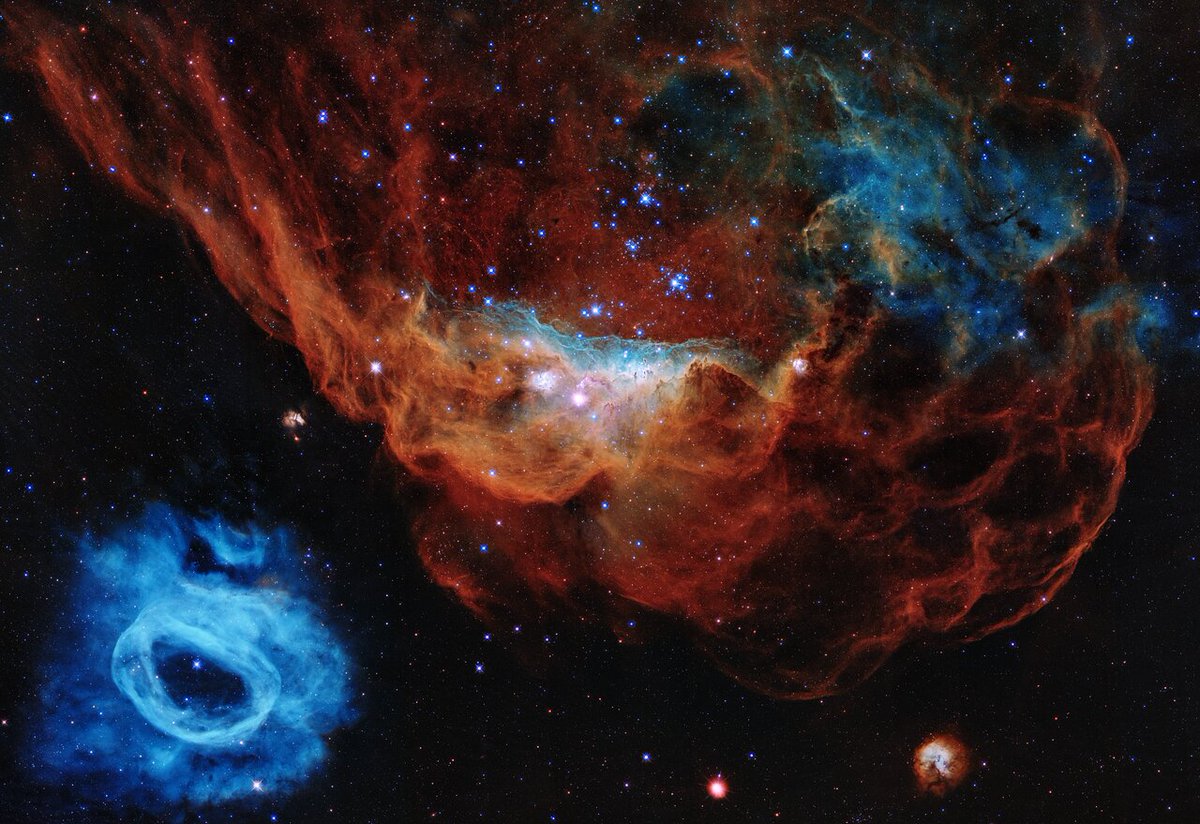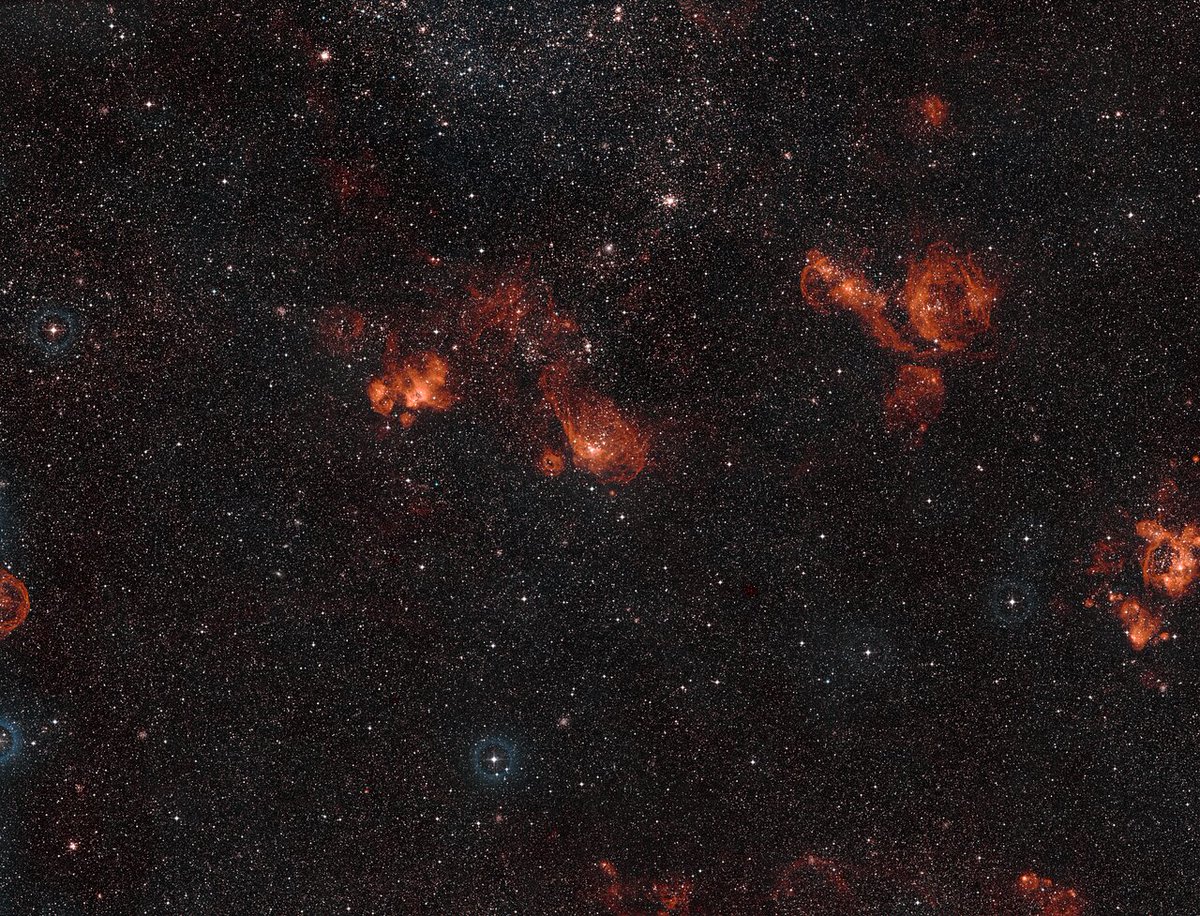1/6 Here it is! The anniversary image of #Hubble30 features the giant nebula NGC 2014 and its neighbour NGC 2020, part of a vast star-forming region in the Large Magellanic Cloud.
Credit: @NASA / @ESA and @stsci
https://www.spacetelescope.org/news/heic2007/ ">https://www.spacetelescope.org/news/heic...
Credit: @NASA / @ESA and @stsci
https://www.spacetelescope.org/news/heic2007/ ">https://www.spacetelescope.org/news/heic...
2/6 To commemorate three decades of scientific discoveries using @Hubble_Space , this image is one of the most photogenic examples of the many turbulent stellar nurseries the telescope has observed during its 30-year lifetime.
3/6 Although NGC 2014 and NGC 2020 appear to be separate in this visible-light image, they are actually part of one giant star formation complex.
Credit: @ESA / @Hubble_Space / Digitized Sky Survey 2
Acknowledgement: Davide De Martin
Credit: @ESA / @Hubble_Space / Digitized Sky Survey 2
Acknowledgement: Davide De Martin
4/6 The star-forming regions seen here are dominated by the glow of stars at least 10 times more massive than our Sun. These stars have short lives of only a few million years, compared to the 10-billion-year lifetime of our Sun.
5/6 The sparkling centerpiece of NGC 2014 is a grouping of bright, hefty stars near the centre of the image that has blown away its cocoon of hydrogen gas (coloured red) and dust in which it was born.
6/6 By contrast, the blue-coloured nebula below NGC 2014 has been shaped by one mammoth star that is roughly 200 000 times more luminous than our Sun.

 Read on Twitter
Read on Twitter



